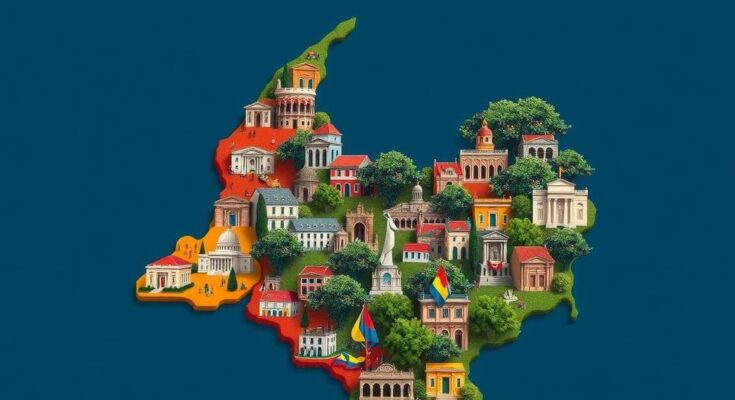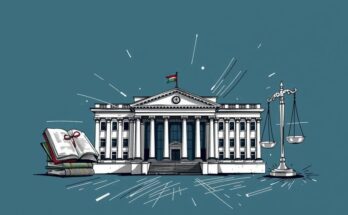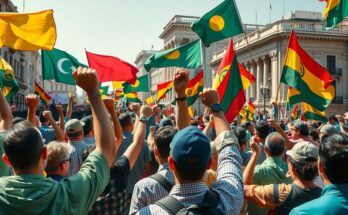Colombia’s path to independence was characterized by uprisings against Spanish rule, civil conflicts, and competing leadership ambitions. The uprisings began in 1810, leading to independence declarations by 1811. Simón Bolívar emerged as a key figure, establishing Gran Colombia by 1819, but internal rivalries eventually led to fragmentation. By 1830, the republic was struggling with governance issues after Bolívar’s resignation amid ongoing political tensions.
The history of Colombia during its early years of independence is marked by turmoil and the struggle for governance. The French invasion of Spain in 1808 spurred a wave of loyalty towards the Spanish crown amid fears for the church’s future, leading to conflicting actions among colonial authorities. Notably, the uprising in Bogotá on July 20, 1810, initiated a sequence of events that would culminate in independence. Although these uprisings initially expressed loyalty to the king, they led to declarations of independence by 1811, with various civil wars erupting as leaders jostled for power. This period of instability facilitated the Spanish reconquest from 1814 to 1816.
During this challenging time, republican forces regrouped under Francisco de Paula Santander in Casanare, while Simón Bolívar, an emerging leader, gained traction in the Orinoco region. Bolívar’s military campaigns, especially his victories against Spanish forces, laid the groundwork for the establishment of Gran Colombia in 1819, composed of territories that would eventually become modern-day Colombia, Panama, Venezuela, and Ecuador. The republic’s organization occurred through territorial congresses, promoting a centralized government with Bolívar as president until discontent and rivalries led to fragmentation and civil strife.
Despite Bolívar’s attempts to maintain unity, by 1830, the republic was in disarray, and he resigned during a constitutional convention where Venezuela and Ecuador had already declared independence. Following Bolívar’s death, Colombia, known then as New Granada, faced challenges in governance and internal divisions. Under the leadership of Santander in the 1830s, the nation experienced some development, but the underlying tensions between liberals and conservatives ignited a civil war in 1840, hampering progress and continuity in the region’s political landscape.
Colombia’s history from revolution to independence reflects the complexity of establishing a stable governmental framework amidst military conflicts and regional ambitions. The initial resistance to Spanish rule was driven by local leaders who were seeking autonomy and were engaged in conflicts representing broader interests within the society. The political landscape was characterized by allegiances that were often shifting, leading to fragmentation and a lack of unified support for the new republic. The aftermath highlighted the emergence of political factions that would shape the country’s future, which was further complicated by Bolívar’s leadership style and subsequent challenges following his departure.
In summary, the struggle for Colombian independence from Spanish rule was fraught with conflict, competing loyalties, and the eventual establishment of Gran Colombia. Despite the initial successes, civil strife and fragmentation soon eroded the republic’s unity. Bolívar’s leadership play a critical role in shaping this period, but the persistent rivalries between political factions indicated the challenges that lay ahead for the newly formed nation. Ultimately, Colombia’s early history illustrates the complexity of governance in a region eager for independence yet troubled by internal divisions.
Original Source: www.britannica.com




